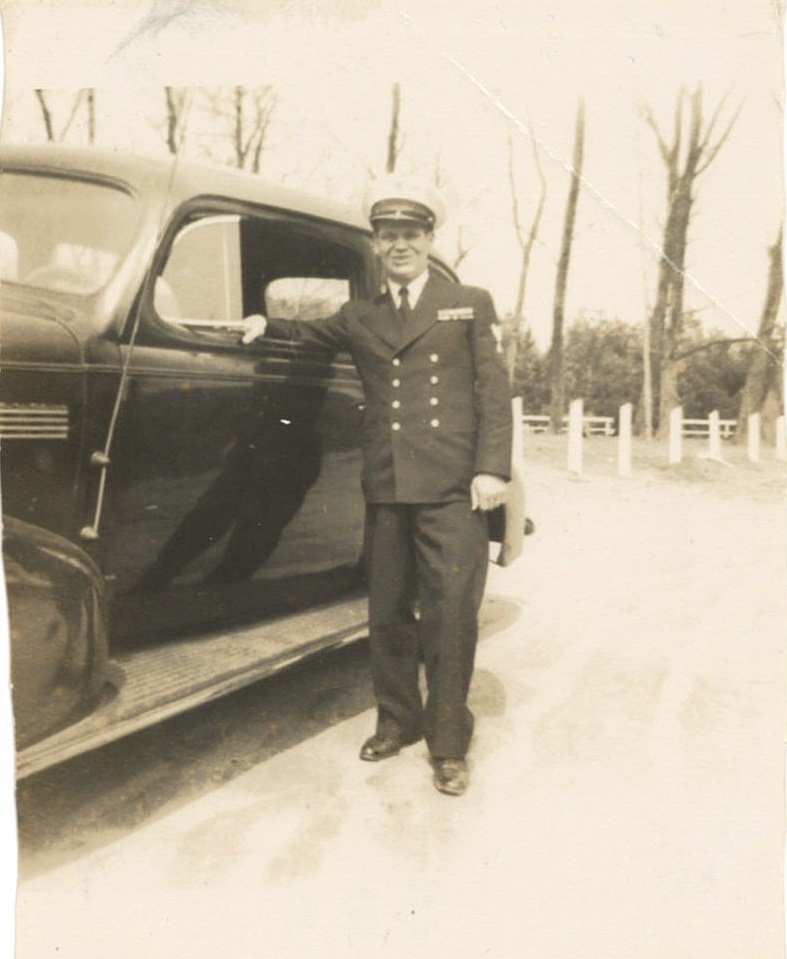 Robert “Bob” Manges grew up in Virginia Beach, Va., and lived in a house without electricity, indoor plumbing and heating. His family pumped water from a well and used an outdoor privy in the backyard. Before he served in the Coast Guard, Manges’s father was a butcher so Manges learned the butcher’s trade. He was taught to not shirk responsibility and to do everything to the best of his ability. Manges was imbued with a very curious mind and an aptitude for problem solving.
Robert “Bob” Manges grew up in Virginia Beach, Va., and lived in a house without electricity, indoor plumbing and heating. His family pumped water from a well and used an outdoor privy in the backyard. Before he served in the Coast Guard, Manges’s father was a butcher so Manges learned the butcher’s trade. He was taught to not shirk responsibility and to do everything to the best of his ability. Manges was imbued with a very curious mind and an aptitude for problem solving.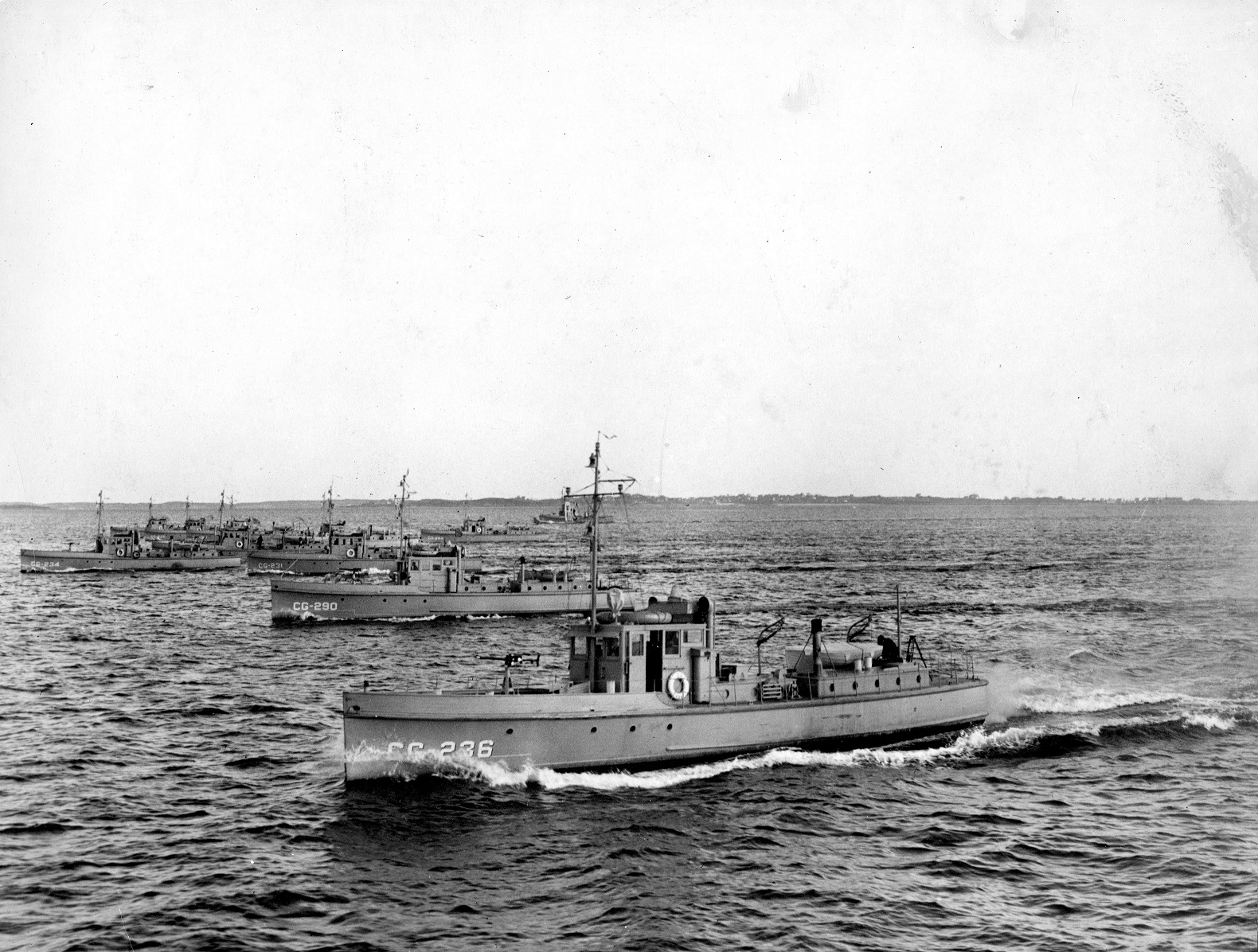
Manges graduated from high school in 1937 and had friends serving in the Coast Guard. He was attracted to the service by the $21-per-month pay with food provided. He enlisted in 1939 hoping to land a local Coast Guard shore position. At the time, recruits still received their basic training aboard a cutter or at a shore installation. On Sept. 18, he became one of 16 able seaman recruits sent to the Coast Guard Cutter Modoc stationed at Morehead City, N.C. He polished brass, holystoned decks, scraped bilges and coated everything with Norfolk Red Lead paint. He even volunteered to serve as “Captain of the Head,” regularly cleaning that facility. The Modoc required four cooks, so Manges served as butcher and peeled potatoes. Author Thom Rennie’s father, Pharmacist Mate First Class George Rennie, also served aboard the Modoc, but later, from 1944 to 1945.
During Manges’s time aboard the Modoc, the cutter visited Algiers, La., across the river from New Orleans. The cutter remained there for a week at the Todd & Johnson Dry Docks for degaussing calibration. While there, Manges visited Mack’s Restaurant & Raw Bar and bet a patron he could eat 12 dozen oysters at one sitting. Manges bet the man $100 and ate all 12 dozen oysters. Manges collected the bet, walked to a nearby alley and threw up, before returning to order another dozen oysters to show off to the losing bettor.
In 1940, the Coast Guard sent Manges to its Cooks and Bakers School located near Groton, Conn. He hitchhiked all the way from New Orleans, including a lengthy ride with two older women in which he drove much of the way to Groton.
After finishing cooks school, Cook Third Class Manges was assigned to the 75-foot wooden-hulled a “Six-Bitter” patrol boat CG-228 also based at Morehead City. Originally built for Prohibition patrols, the cutter conducted offshore picket duty during the war. The cutter was crewed by eight enlisted men and with a chief warrant officer as skipper. He was the only cook serving three meals a day and he slept onboard. He liked to ask shipmates where they were from and cooked meals they liked from that region. His pay helped him buy his first car, a 1917 Model T Ford for $35.
His next assignment was the 125-foot Cutter Agassiz, also stationed at Morehead City. The Agassiz performed beach patrol cruises. There were two cooks aboard serving three officers and 17 enlisted men.
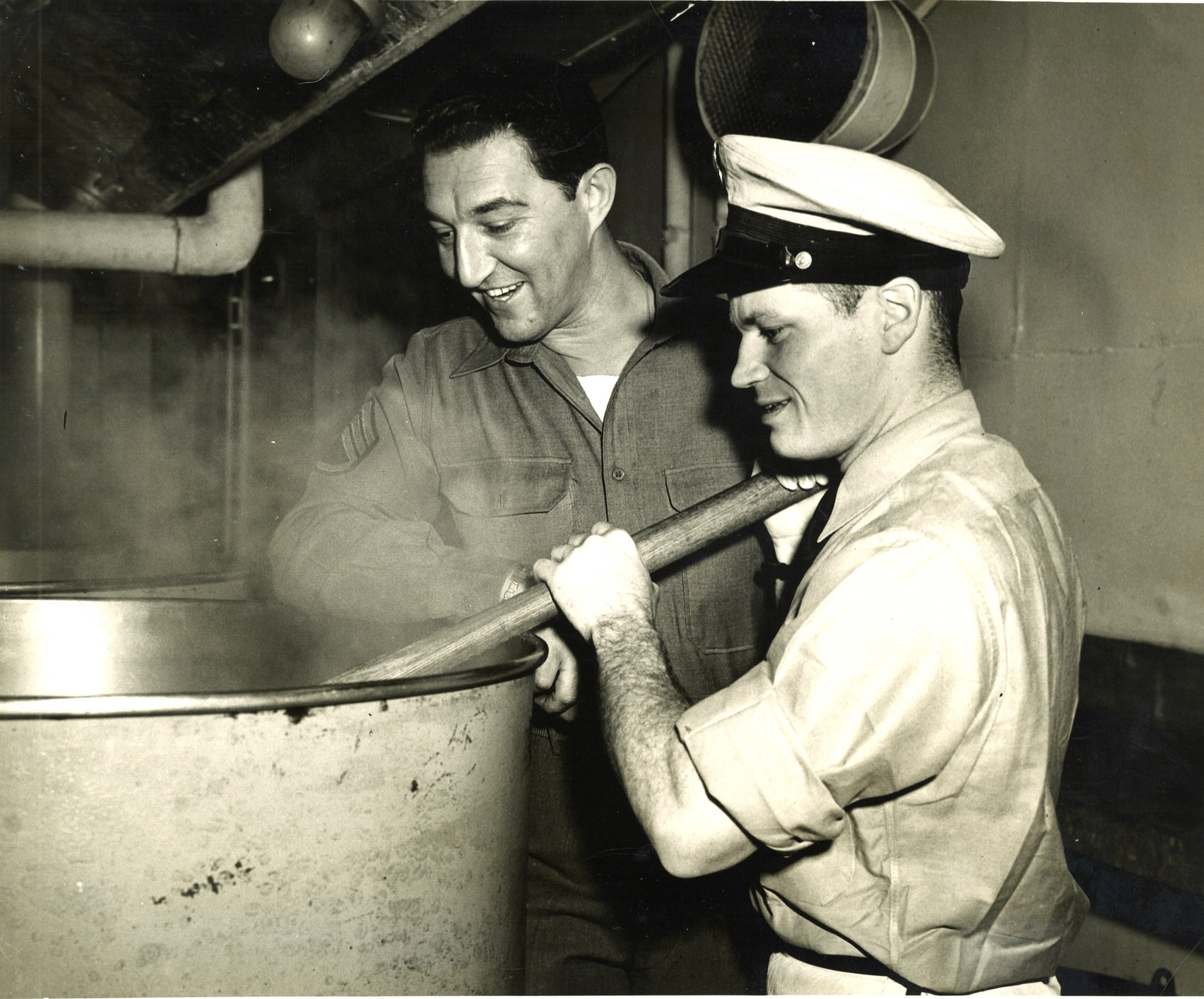
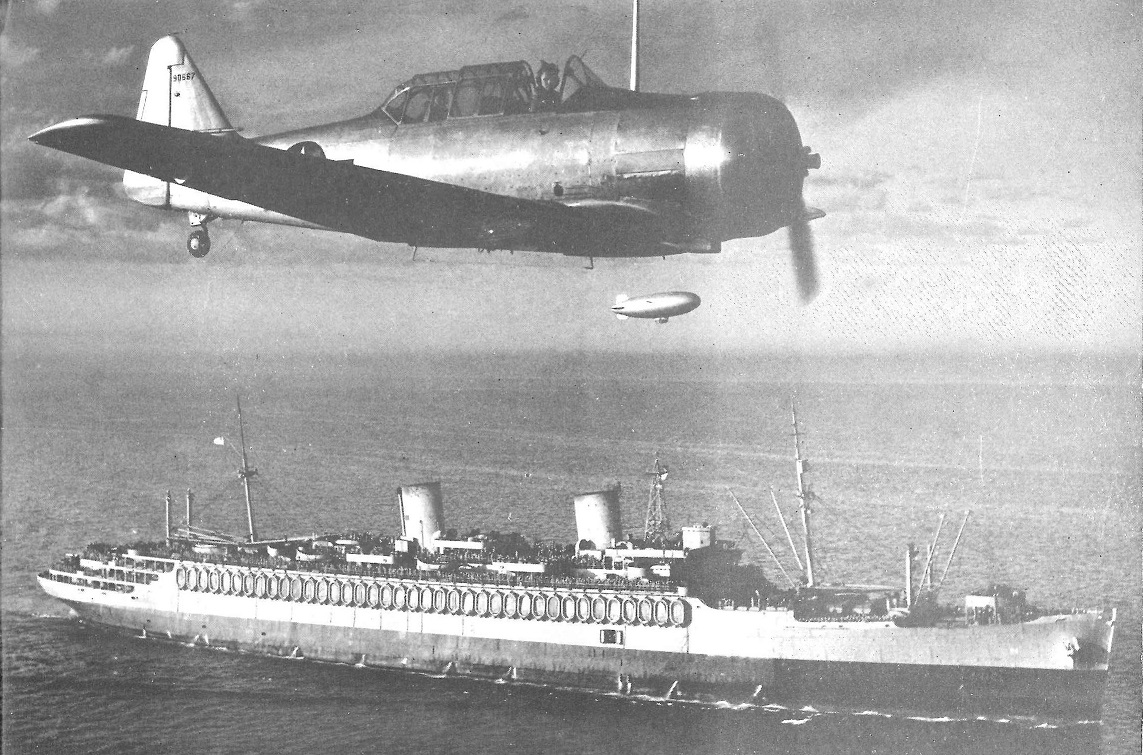 Manges then transferred to Charleston, S.C., to serve as a cook aboard Coast Guard Cutter Mohawk, nicknamed “Mighty Mo.” The cutter went on North Atlantic Patrol helping to escort tankers to the southern Greenland air base “Bluie 2.” His general quarters duty was a “powderman” for one of the cutter’s three-inch deck guns. The cutter had four cooks aboard serving 10 Officers and 124 Enlisted. There were two cooks per shift. Manges served 24 hours on and 24 hours off preparing breakfast, lunch, and dinner, and his shift took place from noon to midnight. During heavy weather in the North Atlantic, the galley’s smoke stack shook loose coating the galley and food with a layer of soot. He got the black gang from the engine room to reattach the stack.
Manges then transferred to Charleston, S.C., to serve as a cook aboard Coast Guard Cutter Mohawk, nicknamed “Mighty Mo.” The cutter went on North Atlantic Patrol helping to escort tankers to the southern Greenland air base “Bluie 2.” His general quarters duty was a “powderman” for one of the cutter’s three-inch deck guns. The cutter had four cooks aboard serving 10 Officers and 124 Enlisted. There were two cooks per shift. Manges served 24 hours on and 24 hours off preparing breakfast, lunch, and dinner, and his shift took place from noon to midnight. During heavy weather in the North Atlantic, the galley’s smoke stack shook loose coating the galley and food with a layer of soot. He got the black gang from the engine room to reattach the stack.
The service then sent Manges back to its cooking school as an instructor. He taught mainly in the butcher shop, but also in the galley and baker shops. He had a reputation among other instructors and school students for knowing his business about a cow, using his bone knife to cut up meat quickly without leaving meat on bones.
He had a great relationship with his boss at the school, a lieutenant commander commissary officer. Manges proved an excellent instructor, and gave special treatment to his commanding officer, cooking him special meals, and maintaining his car. The lieutenant commander offered him chances to take exams for promotion in quick succession. Manges studied hard and in less than a year achieved a meteoric rise in rank being promoted from cook third class to chief commissary steward (CSS) earning $168 per month! He also got his second car at Groton, a 1939 Chevy sedan with 39,000 miles for $300.
Manges was transferred to the USS Wakefield when he was 22 and served on the transport until 1946, including 34 cross-Atlantic trips between Boston and Liverpool, England. He and author Thom Rennie’s father were “plank owners” on the Wakefield when the ship was re-commissioned in February 1944 under Coast Guard Capt. Roy Raney. He did not know Rennie’s father personally but he got a couple of “butt jabs” in sick bay, which might have been given by Rennie’s father.
The Wakefield was a fast troopship that could steam at speeds over 20 knots to deliver military personnel and supplies to the war front. The transport was manned by a Coast Guard crew of 900 men and could carry up to 7,000 troops. The average roundtrip for those Boston to Liverpool runs was 18 days. The Wake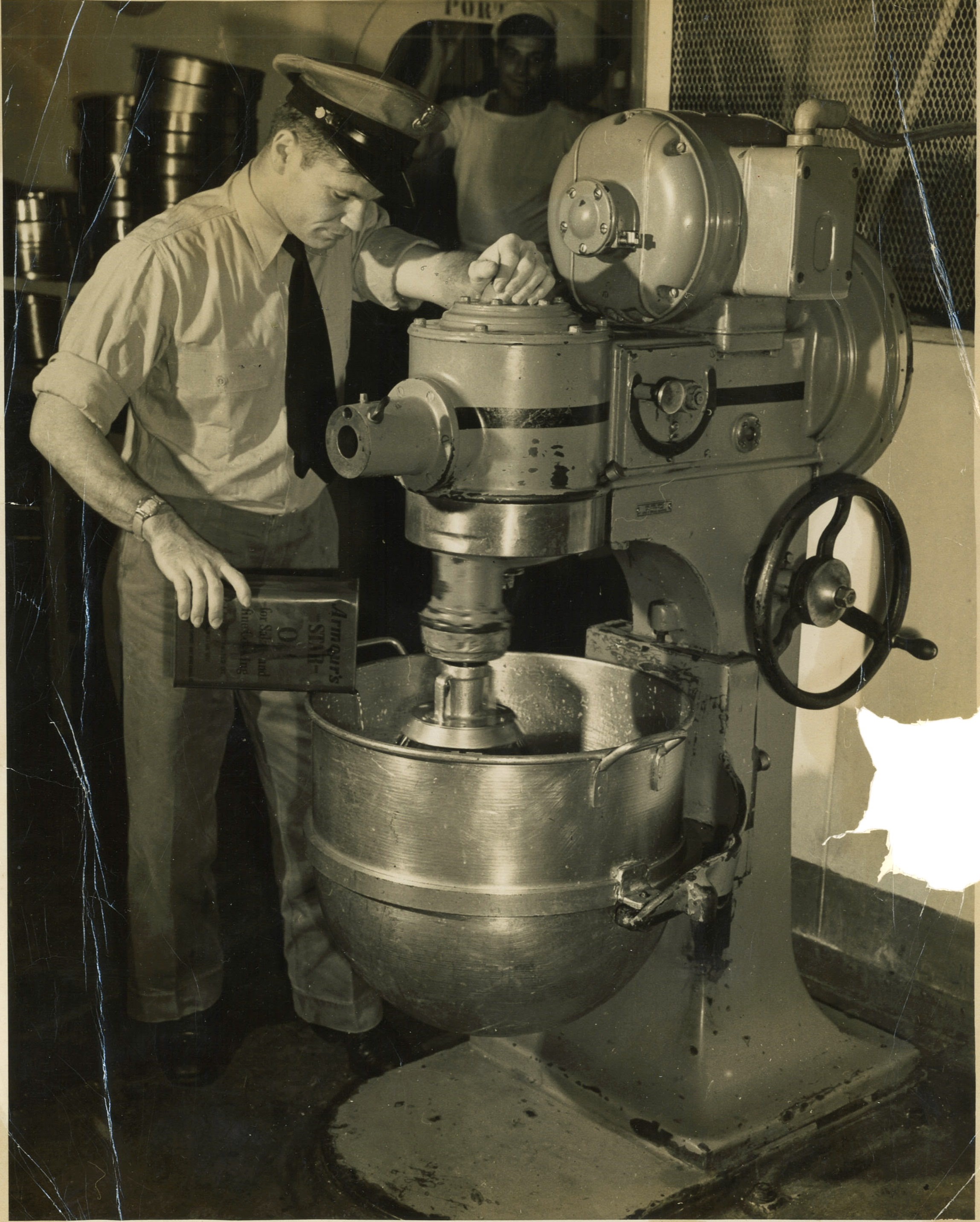 field was critical to ferrying Army and Army Air Corps personnel to England in the days leading up to D-Day. After D-Day, the Wakefield returned to the States with captured Germ
field was critical to ferrying Army and Army Air Corps personnel to England in the days leading up to D-Day. After D-Day, the Wakefield returned to the States with captured Germ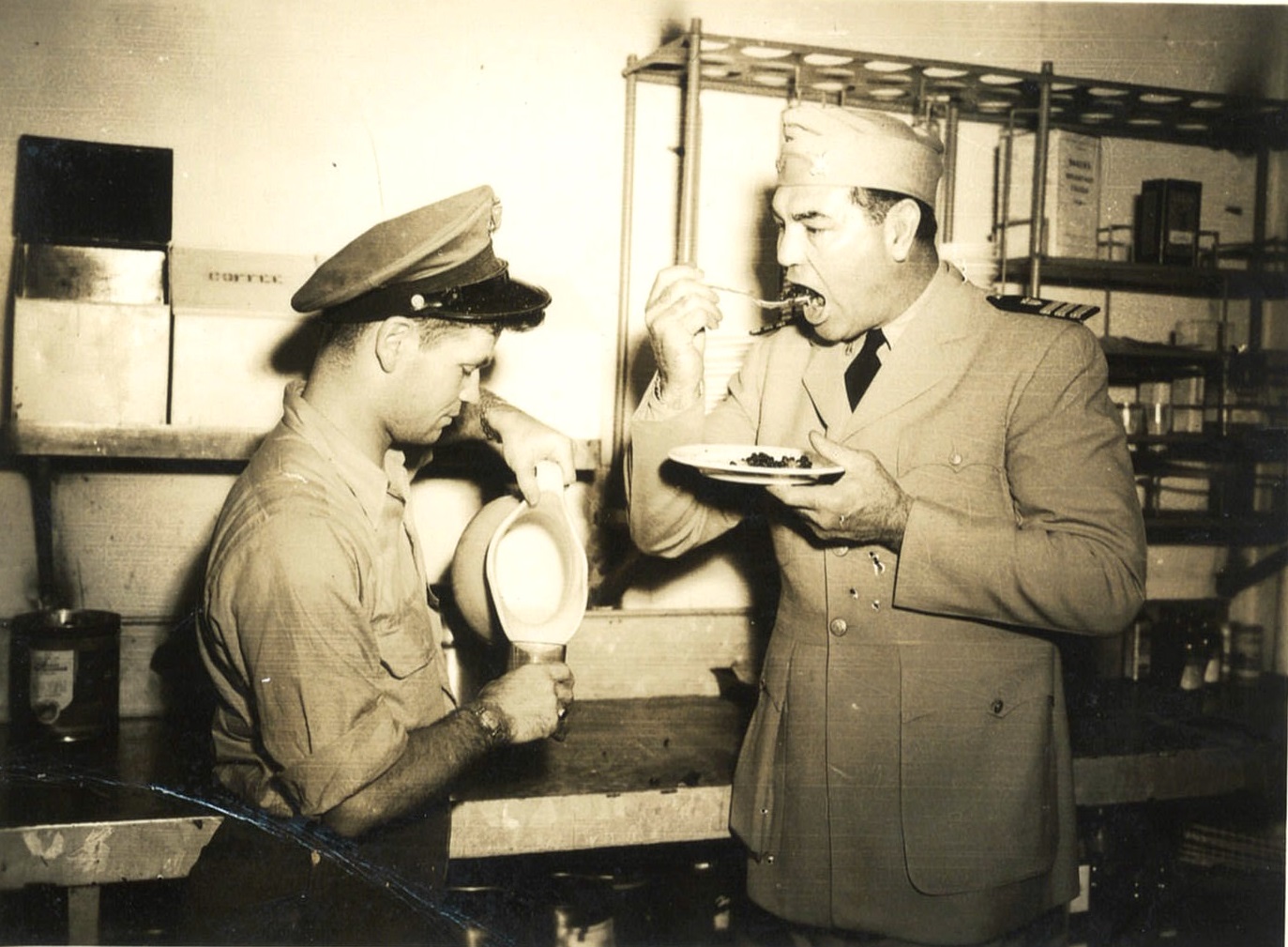 an POWs and, after the May 1945 victory in Europe, brought home U.S. troops. Wakefield travelled without escort or in convoy using its speed and zigzagging to evade German submarines. It was never attacked by a German submarine or aircraft.
an POWs and, after the May 1945 victory in Europe, brought home U.S. troops. Wakefield travelled without escort or in convoy using its speed and zigzagging to evade German submarines. It was never attacked by a German submarine or aircraft.
The Wakefield had 220 Coast Guard cooks, bakers, and butchers to feed the ship’s crew and troops. Chief Manges spent most of his time in the troop officer and enlisted galley and mess decks. He slept in the Chiefs Quarters in the middle bunk of a stack of three and had a footlocker. The chief’s toilet and washroom were located adjacent to the bunks. Unlike other enlisted crewmembers, cooks had no required general quarters stations aboard the Wakefield.
All food provisions for crewmembers and troops for a round-trip run to and from Liverpool were delivered to the Wakefield in Boston by trucks. There, trucks and railcars on tracks arrived at the pier, including refrigerated freight cars. No provisions were loaded at Liverpool in the ship’s return trip to Boston.
All commissary chiefs directed loading stores onto the ship. Stores were moved onto the ship thru side entry doors and trunked hatches and moved to galleys for immediate use. Other stores were moved below decks to dry provisions rooms and separate refrigerated rooms for dairy, fruit, and meat, for long-term storage before use. Meat was delivered to the ship in 50-pound packages and it took two days to thaw before use. Troops helped peel and slice the large numbers of potatoes and onions used daily. Manges’s job also had its hazards. During Wakefield’s round trips, the commissary chief on the ship’s A Deck fell thru an open hatch and died
Troops were served two meals a day standing-up eating cafeteria-style. Soldiers moved in four lines with 1,000 troops fed every 20 minutes. The cooking staff used melamine cups and bowls from racks and were served large portions onto trays that had six compartments with no options of food choice. The Coastie crew had their own mess hall and were served three meals a day.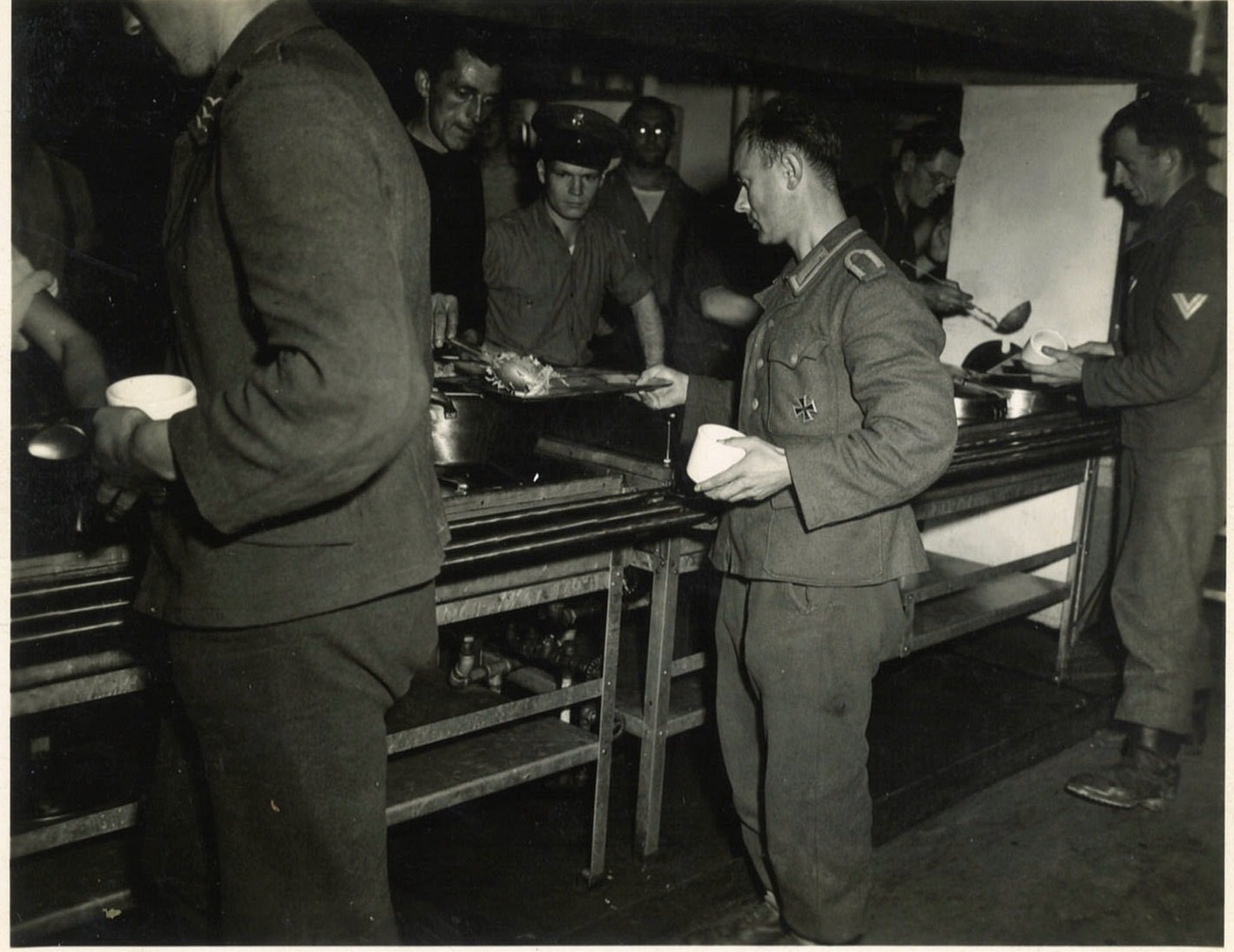
After D-Day, the Wakefield began several trips as a casualty-evacuation ship bringing back wounded GIs and treating them in its 92-bed sickbay. The ship also brought back German prisoners of war for internment in the States. Those German prisoners were fed like the GIs cafeteria-style, but with armed guards in mess halls. They used spoons but no knives. Manges is shown in a photo standing with some Asian Turkmen in German uniforms and an armed guard. They had been forced to serve at Normandy and surrendered to the Allies.
Some 2,500 loaves of bread were produced in the ship’s bakery. Then the staff mixed dough in large industrial mixers and hundreds of pounds of butter were consumed daily. Boiled coffee was constantly brewed in 90-gallon cauldrons from fresh beans (stored in 100-pound sacks) and served with powdered sugar.
Galleys cooked food in 12 to 15 copper cauldrons of 60 to 90 gallons in size using paddles to stir the contents. Evaporators produced 90,000 gallons of water daily for all ship needs, including prepping food, cooking, coffee making, and scullery work.
Standard menus were used on all voyages to make ordering of stores easier. Breakfast was typically bacon, sausage, oatmeal, toast, and scrambled eggs composed of real eggs and dehydrated eggs. Lunches were typically casseroles of every type, many covered with dough. Dinners generally included meats, such as ham and roast beef, but no steaks. Once when the Wakefield was berthed at Commonwealth Pier in Boston, Manges received permission from the commissary officer to use canteen funds to purchase lobsters for all aboard.
One memory of Manges on the Wakefield took place when he served heavyweight boxing champion and Coast Guard commander, Jack Dempsey, apple pie and a glass of milk in the Chief’s Galley. He also cooked for nurses and once served several of the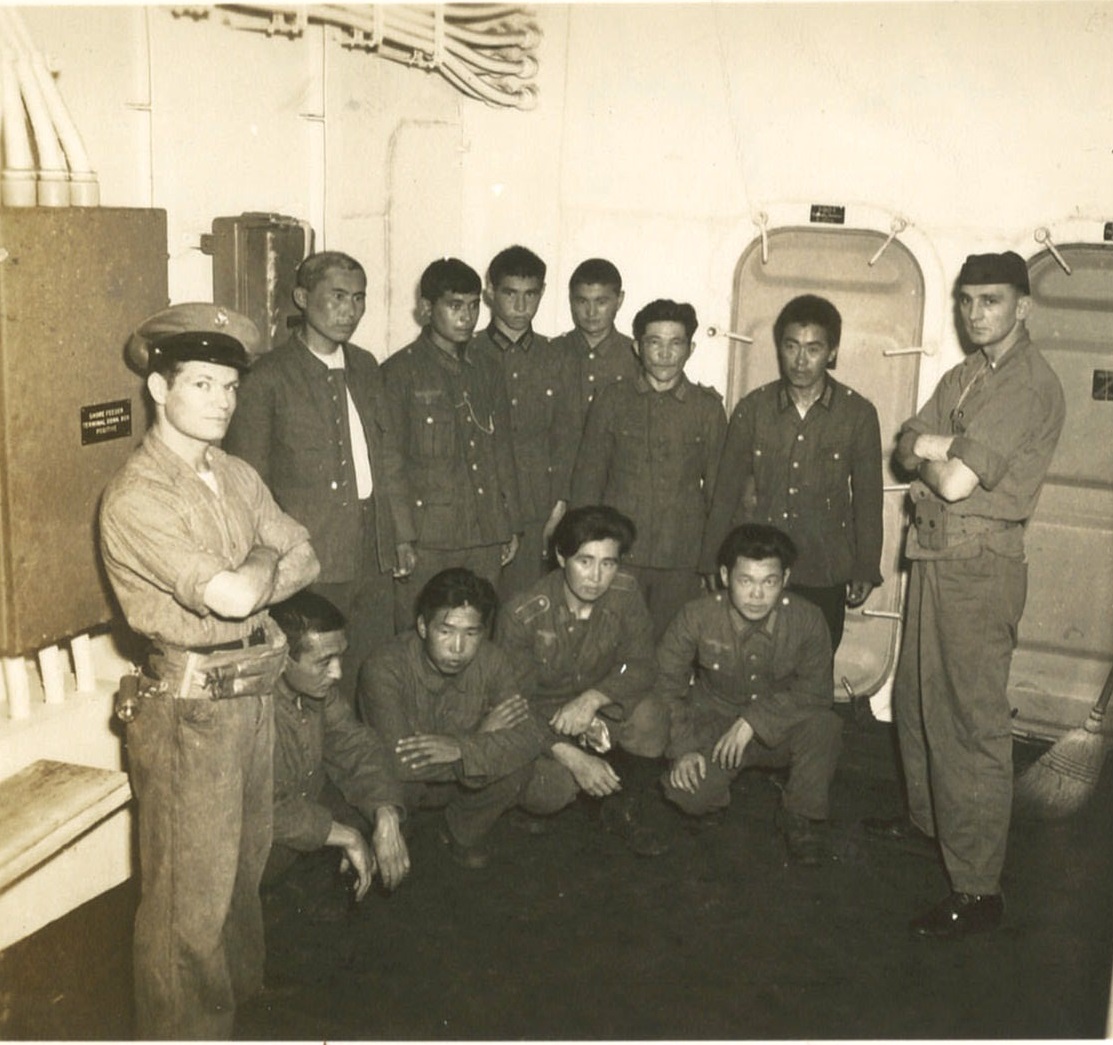 m a h
m a h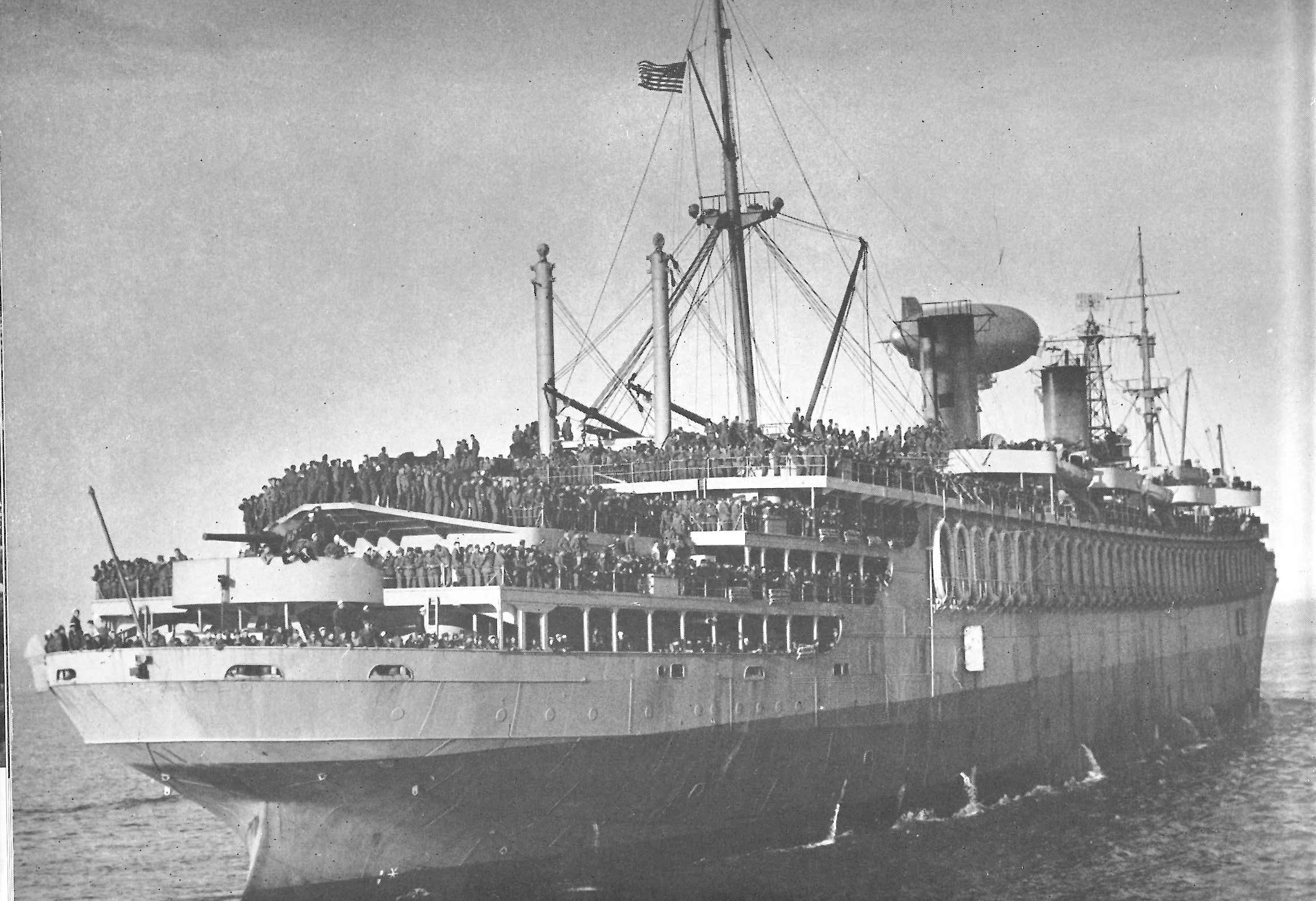 uge cake.
uge cake.
Manges was going to make a career in the Coast Guard, but his father talked him into leaving the service and going into the butcher and grocery business. He later regretted not staying in the Coast Guard after the war.
After living two years out of the state, Manges returned to Virginia Beach in 1948 becoming a partner in an electrical contracting business and became a master electrician. During the 1959 recession, he sold his electrical business and returned to the food service to work as food service director at the University of Pittsburg. He worked in the same position for other colleges and universities, including the University of Alabama, commuting every week from Virginia Beach to Tuscaloosa. He then served 33 years as Electrical Inspector for the City of Virginia Beach retiring in 2009 at age 87.
He also bought property on the water in Virginia Beach and helped build his home (plumbing, wiring, floors, and painting). He was married to his wife Juanita Mae for 74 years, losing her in 2017. Today, he likes to sit and think, watch the sunset and read a book a day. When asked what has helped him live to be 100-years old, he lists five things: A belief in God, love for his fellow man, eating well, drinking moderately and enjoying female company.
Thanks to Chief Manges for his World War II service to our country and working hard to keep his crewmates on his Coastie ships and passengers on the Wakefield well-fed on their way to their overseas missions and on their return to home. As Napoleon once said, “An army marches on its stomach.”